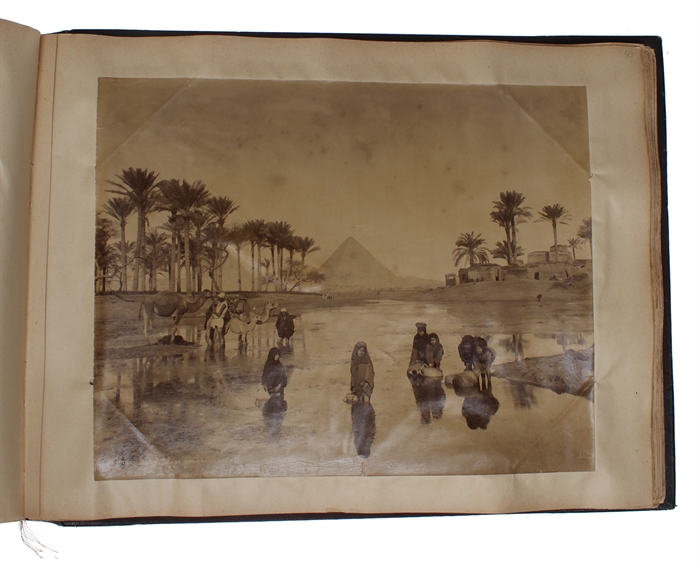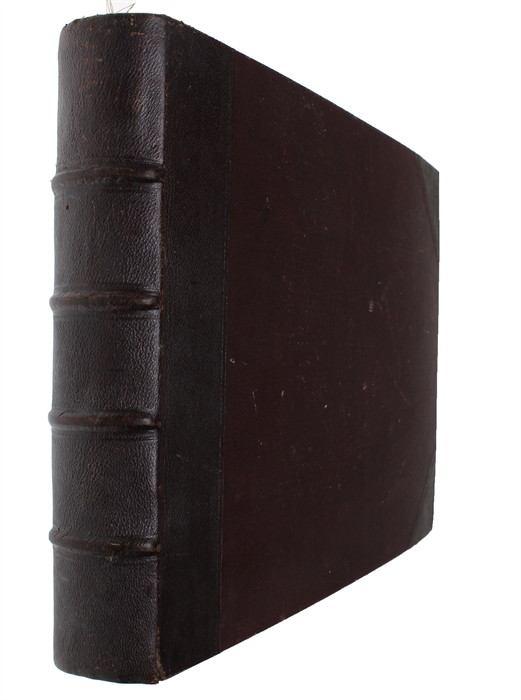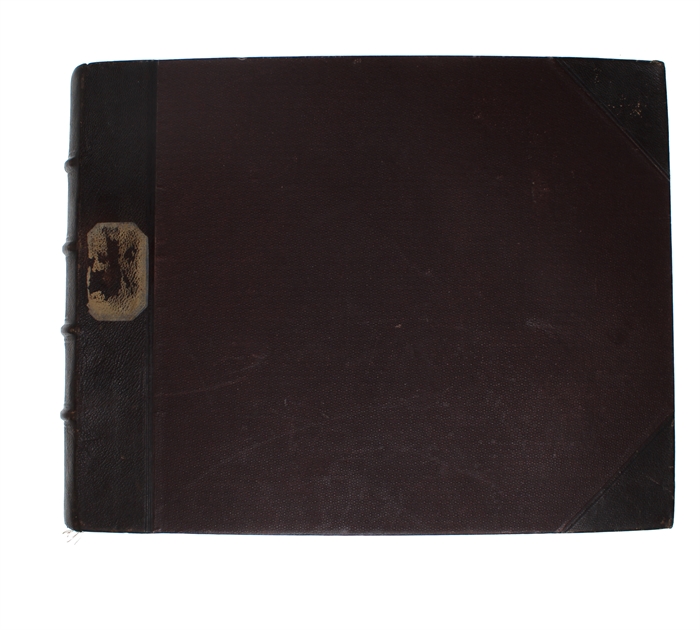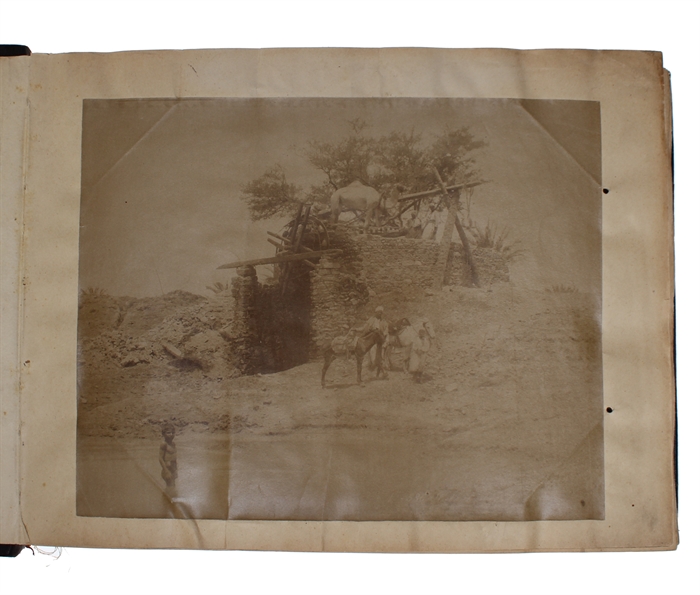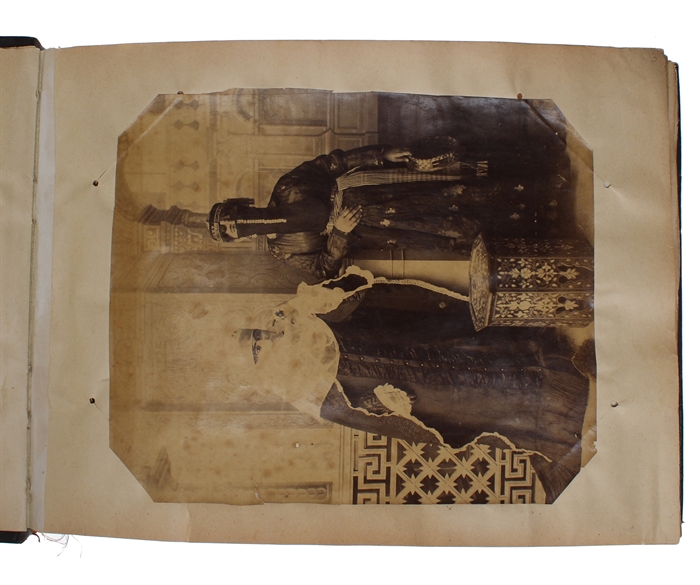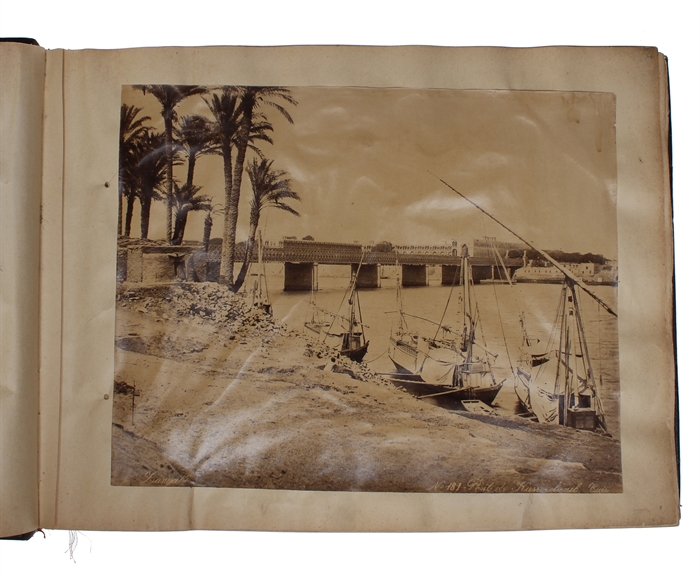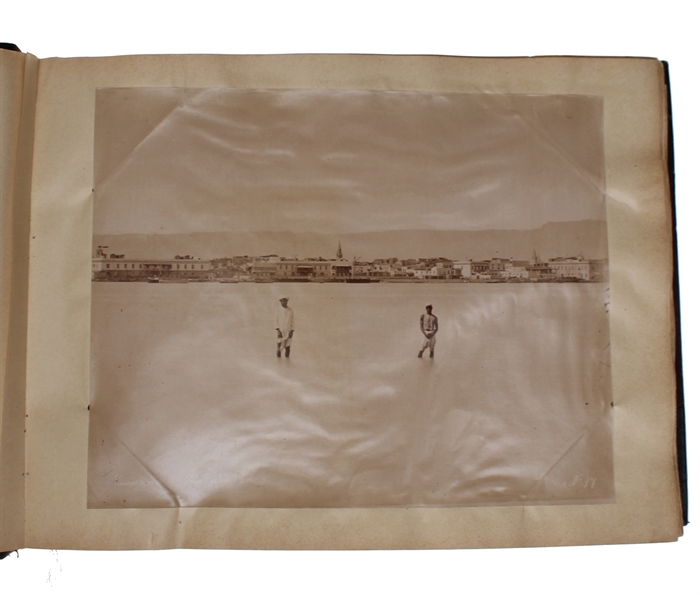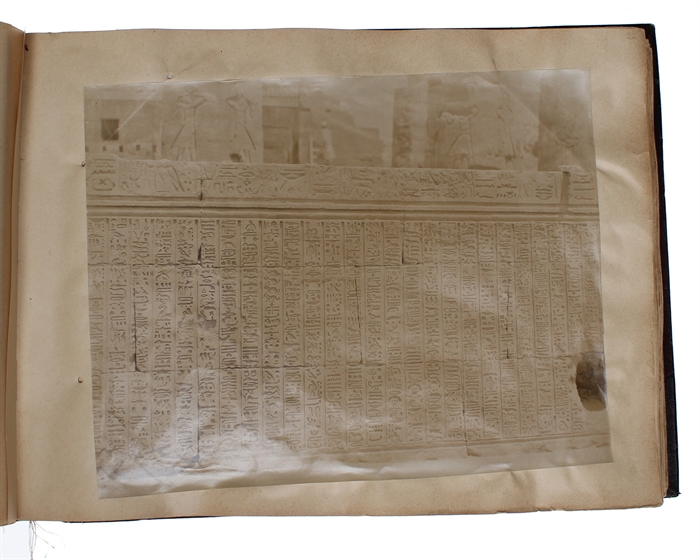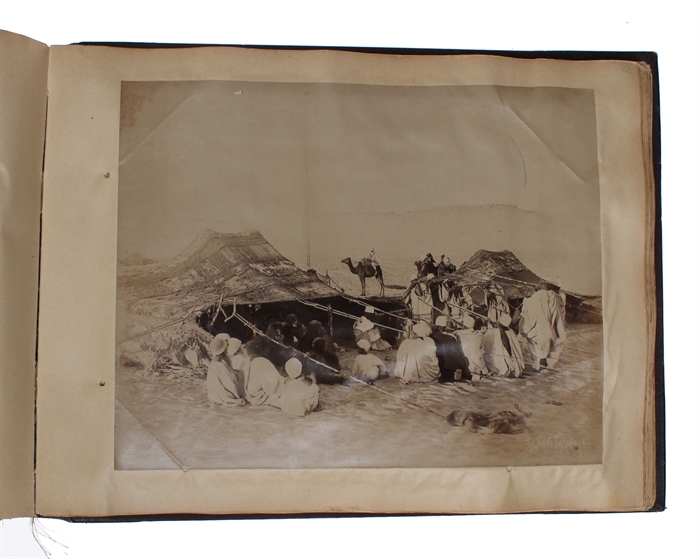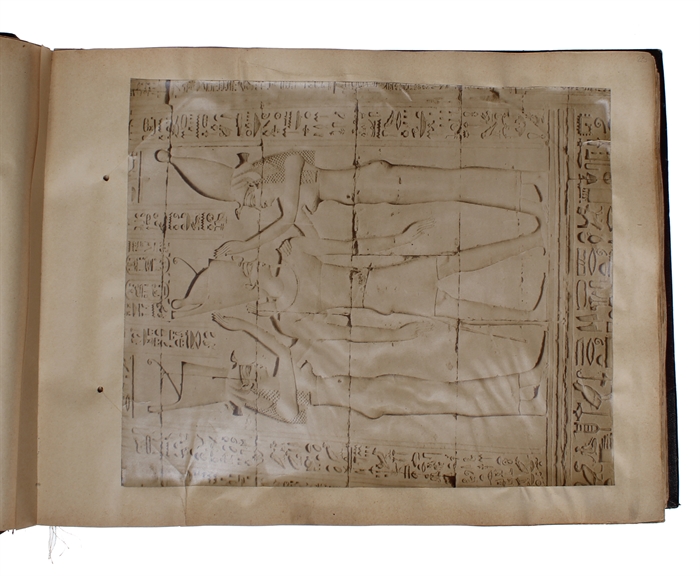MAGNIFICENT ALBUM WITH EARLY PHOTOGRAPS OF EGYPT INCLUDING SOME OF THE VERY EARLIEST OF THE SUEZ CANAL
ZANGAKI (+) BONFILS (+) ARNOUX (+) A. BEATO (+) FIORILLO (+) BECHARD (+) SEBAH.
Album containing 146 albumen prints of Egypt from the 1870ies.
Egypt, ca. 1870ies.
Folio-oblong (365 x 280 mm). 146 albumen prints mounted verso and recto on 73 ff. Bound in contemporary half cloth. With traces of paper-label to inner margin of front board. Label of the stationery shop "Maison Martinet, Albert Hautecoeur, bd des Capucines, 12, Paris" pasted on to upper outer corner of pasted down front end-paper. Paper creased and some leaves symetrically perforated, not affecting photos. Two photos with tears and a few photos partly detached from paper. Some photos are slightly discoloured and toned but are in general in good condition.
Extraordinary collection containing 146 albumen prints depicting landscapes and animated scenes of Egypt including some of the very earliest photographs of the newly opened Suez Canal. The photographs also document a period in Egyptian history, where the country began to gain independence and autonomy from Ottoman rule; Constantinople had granted Egypt the status of an autonomous vassal state or Khedivate in 1867, and completion of the Suez Canal gave Britain a faster route to India which in turn made Egypt increasingly reliant on Britain for both military and economic aid. Most photos are signed by the greatest local photographers of the time: the Zangaki brothers, Bonfils, Arnoux, Beato, Fiorillo, Béchard and Sébah. Active in the second half of the 19th century, these photographers of diverse origins such as French, Italian, British, Ottoman and Greek all established a studio or a branch in Egypt, in Alexandria, Port Said and Cairo. The Suez Canal was one of the most ambitious engineering projects of the 19th century. It was designed to create a waterway between the Mediterranean Sea and the Red Sea, linking Europe and Asia and providing a faster and more efficient route for shipping goods between the two continents. Construction of the canal began in 1859 and took over ten years to complete. Hippolyte Arnoux is best known for his remarkable photographs of the Suez Canal in Egypt. Arnoux's photographs of the Suez Canal were groundbreaking in their time and remain an important documentation of the construction of one of the world's most significant engineering endeavors. He was hired by the French government to document the construction of the canal, and he spent several years in Egypt taking photographs of it. He used a large-format camera, which allowed him to capture incredible detail and clarity in his images. Zangaki's portrait photography also received much acclaim. His portraits were known for their ability to capture the essence of his subjects, conveying their personality, character, and emotions, and his portraiture work also demonstrated his mastery of lighting, composition, and posing. Their work contributed significantly to the early days of Egyptology, as it allowed European scholars and archaeologists that were not in a position to travel to examine the monuments and artifacts.
Arnoux's photographs of the Suez Canal were not only important documents of the construction of the canal, but they also played an important role in the popular imagination of the time. They helped to promote the idea of progress and modernity, as well as the importance of colonialism and European expansion in the world.
Zangaki's landscape photography is another notable aspect of his work. He and his brother captured breathtaking images of Egypt's natural landscapes, such as the Nile River, the desert, and the countryside. Their images were notable for their use of contrast, shadows, and light, creating a unique atmosphere that evoked the beauty and mystery of Egypt's landscapes.
The present collection forms a fine testament to one the most interesting periods in modern Egyptian history and to the cradle of Egyptian photography.
Order-nr.: 60316

